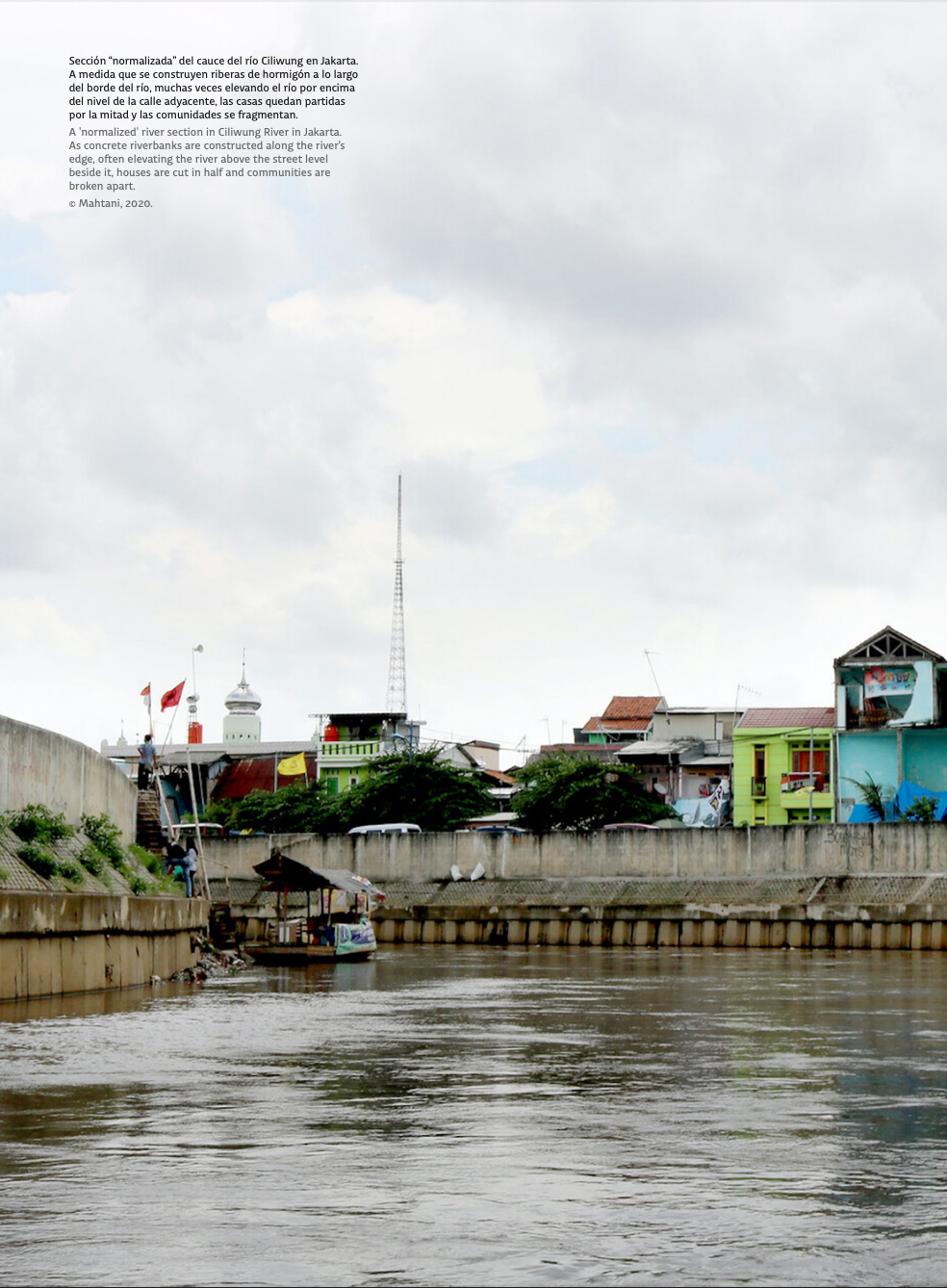Ambivalent Cartographies: The Risk of Mapping the Flood
Article Sidebar

Keywords:
Main Article Content
Abstract
This paper explores the ambivalence of cartography. Responding to Ulrich Beck’s diagnosis of modernity as a society of risk and to the necessity that risk be situated, the paper looks to the mapping project of Nashin Mahtani, who maps the path of rivers which she describes as 'breathing into' rather than flooding urban landscapes. Reconfiguring what it means for the river to exist in place, she suspends the conceit of the map as a product of inert lines and risk as quantifiable in advance. Ultimately, this ambivalent map doesn’t construct space but highlights the living quality of cartographic forms.
Article Details

This work is licensed under a Creative Commons Attribution-NonCommercial 4.0 International License.
Materia Arquitectura provides immediate and free access to all the content of this online edition, published simultaneously with the print edition.
Materia Arquitectura does not charge authors for any concept.
All contents of this electronic edition are distributed under the Creative Commons license of "Attribución-shareAlike 4.0 Internacional" (CC-BY-SA).
The rights of the published texts and images belong to their authors, who grant Materia Arquitectura the license for their use. The management of the permits and the authorization of the publication of the images (or of any material) that contains copyright and its consequent rights of reproduction in this publication is the sole responsibility of the authors of the articles.
As long as they mention their origin, the authors are free to distribute their articles by other means. Any total or partial reproduction of the material must mention its origin.
Downloads
References
BECK, U. (1992). Risk Society: Towards a New Modernity (M. Ritter, Trans.). SAGE.
BECK, U. (2016). The Metamorphosis of the World: How Climate Change is Transforming Our Concept of the World. Polity.BEHAR, R. (1996). The Vulnerable Observer: Anthropology That Breaks Your Heart. Beacon Press.
BORGES, J. L. (1999). On Exactitude in Science. In A. Hurley (Trans.), Collected Fictions (p. 325). Allen Lane.
BUDIYONO, Y., AERTS, J. C. J. H., TOLLENAAR, D., & WARD, P. J.(2016). River Flood Risk in Jakarta Under Scenarios of Future Change. Natural Hazards and Earth System Sciences, 16(3), 757–774. https://doi.org/10.5194/nhess-16-757-2016
DEBORD, G. (2006). Introduction to a Critique of Urban Geography. In K. Knabb (Ed. & Trans.), Situationist International Anthology (pp. 8-12). Bureau of Public Secrets.
HARAWAY, D. J. (1988). Situated Knowledges: The Science Question in Feminism and the Privilege of Partial Perspective. Feminist Studies, 14(3), 575–599.HARLEY, J. B. (1992). Deconstructing the Map. In T. J. Barnes & J. S. Duncan (Eds.), Writing Worlds: Discourse, Text and Metaphor in the Representation of Landscape(pp. 231–247). Routledge.
KJEKSTAD, O., & HIGHLAND, L. (2009). Economic and Social Impacts of Landslides. In K. Sassa & P. Canuti (Eds.), Landslides: Disaster Risk Reduction (pp. 573–587). Springer. https://doi.org/10.1007/978-3-540-69970-5_30
MAHTANI, N. (2020, September). Torrential Urbanism and the Future Subjunctive. E-Flux, Accumulation. https://www.eflux.com/architecture/accumulation/345108/torrential-urbanism-and-the-future-subjunctive/
SCOTT, J. C.(1998). Seeing Like a State How Certain Schemes to Improve the Human Condition Have Failed. Yale University Press.
TSING, A. L. (2015). The Mushroom at the End of the World: On the Possibility of Life in Capitalist Ruins. Princeton University Press